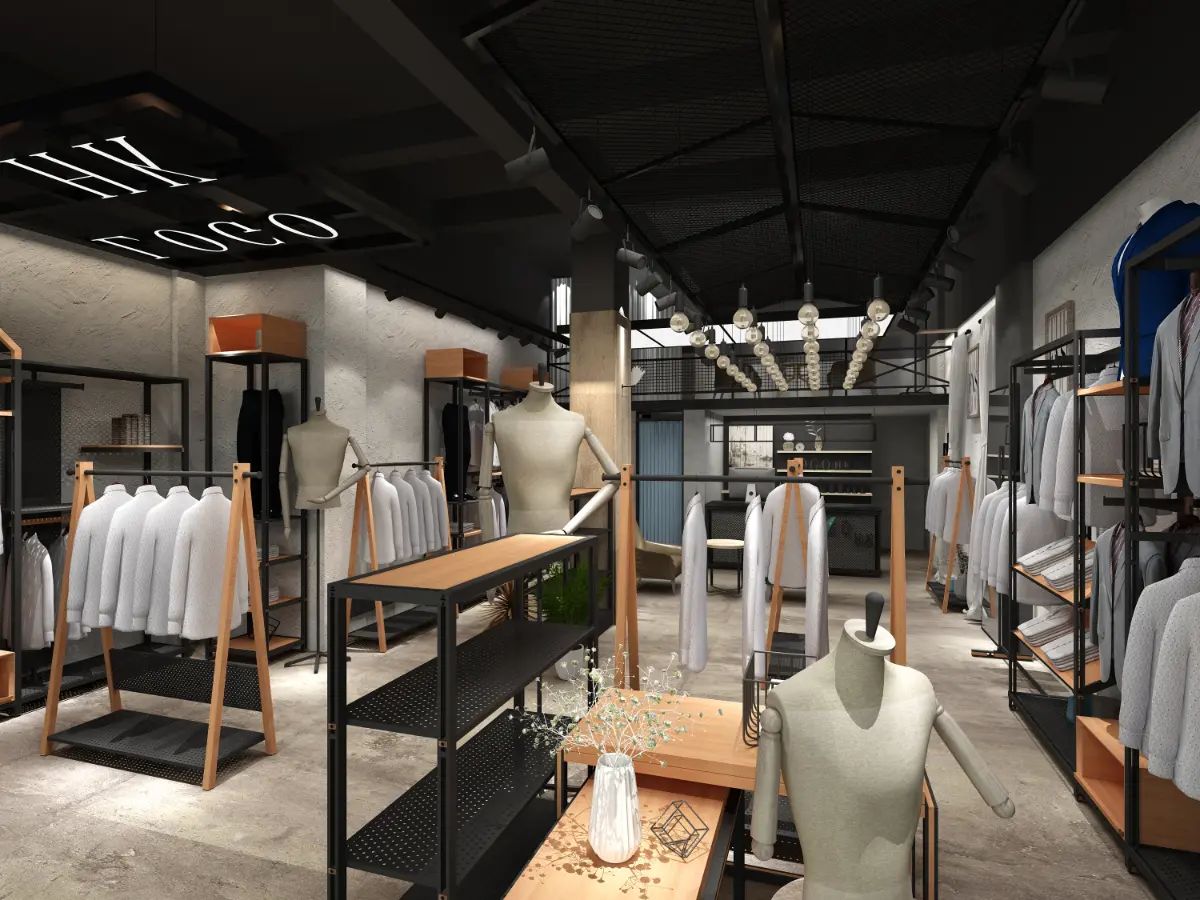A practical, 2025-ready playbook for fashion brand owners, store designers, merchandisers, managers, and mall operators. Learn how to plan, specify, purchase, and deploy clothing store fixtures that elevate sales and strengthen your brand story.
Focus terms: clothing racks for retail stores, display racks for clothing store, retail store clothing display, clothing store fixtures.
1) Why Clothing Racks Decide 60% of Your First Impression
In fashion retail, fixtures are the silent salespeople. The right rack communicates quality, keeps garments in pristine shape, and guides shoppers intuitively. When shoppers step in, their eyes scan verticals and horizons formed by rails, arms, and shelves. Clean sightlines, consistent heights, and logical pathways instantly reduce friction, making discovery and purchase easier.
Key idea: Treat racks as the “skeletal system” of your store: they carry load, define posture, and keep the whole space standing tall.
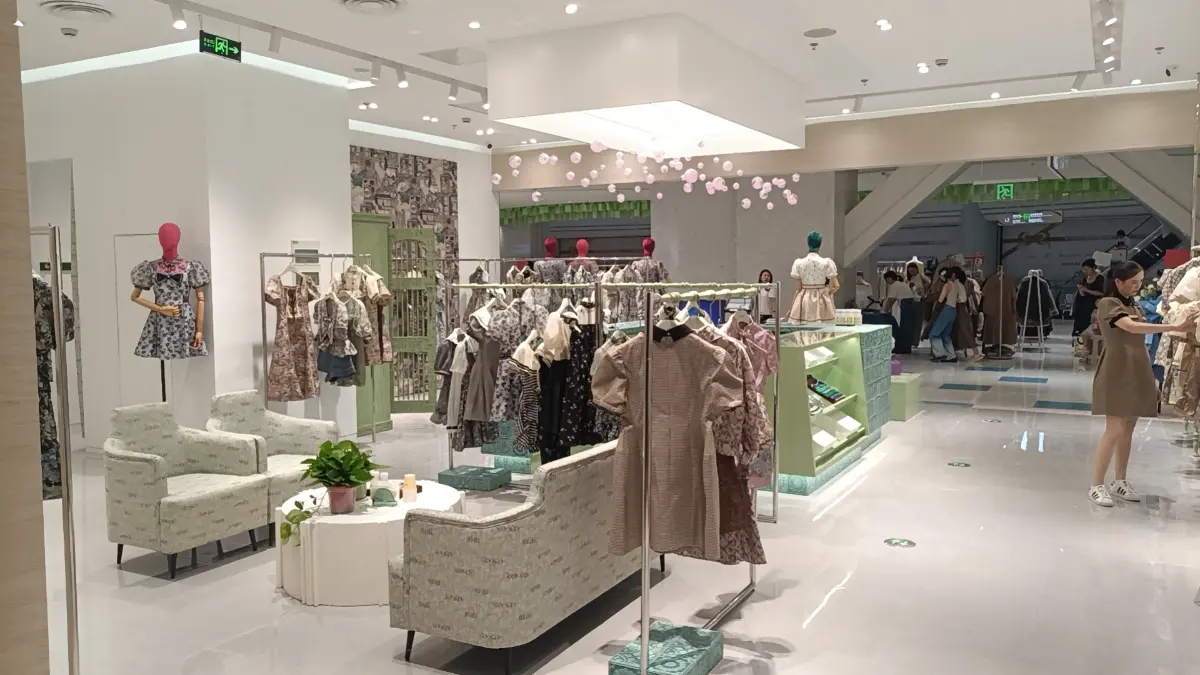
2) Definitions: From Simple Rails to Systemized Fixtures
“Clothing racks” encompass single-rail bars, four-way racks, waterfalls, rounders, and modular wall systems that combine shelves, rails, and face-outs. The goal is to balance aesthetics, capacity, and flexibility while protecting garment integrity. The term retail store clothing display refers to the overall arrangement of products and fixtures that create a narrative path for the shopper.
3) Major Types of Display Racks for Clothing Store Environments
3.1 Four-Way Racks (Quad)
Best for key looks and outfits. Adjustable arms allow face-outs for hero pieces with strong visual impact.
3.2 Round Racks
High density for basics or clearance. Use sparingly in premium boutiques; add top signage to guide discovery.
3.3 Straight Rails & Double Rails
Simple, versatile, ideal for capsule walls and cross-merchandising. Double rails increase capacity in tight footprints.
3.4 Waterfall & Face-Out Arms
Great for showcasing color runs and size ladders. Use to spotlight new arrivals or coordinated sets.
3.5 Wall-Mounted Systems
Space-saving, modular, and visually clean. Pair rails with shelves for folded knits, denim stacks, and accessories.
3.6 Rolling Racks & Back-of-House
For replenishment, pop-ups, and events. Choose lockable wheels and welded frames for durability.

4) Materials & Finishes: Signal Your Brand DNA
Material choice shapes perception. Metal suggests modern minimalism and long life. Wood adds warmth and craft. Glass and acrylic elevate luxury but require careful maintenance. Powder-coated steel frames with brushed brass or matte black accessories remain a timeless option for contemporary brands.
| Material | Brand Signal | Pros | Watch-outs |
|---|---|---|---|
| Powder-Coated Steel | Modern, robust | High load, scratch resistant | Needs felt feet; avoid floor scratches |
| Solid Wood / Veneer | Warm, boutique | Premium feel, softens acoustics | Heavier; avoid high humidity zones |
| Brass / PVD Finish | Luxury, statement | Eye-catching, long wear | Cost; fingerprints—provide gloves for VM |
| Acrylic / Glass | High-end, airy | Light transmission, product-first | Cleaning discipline is essential |
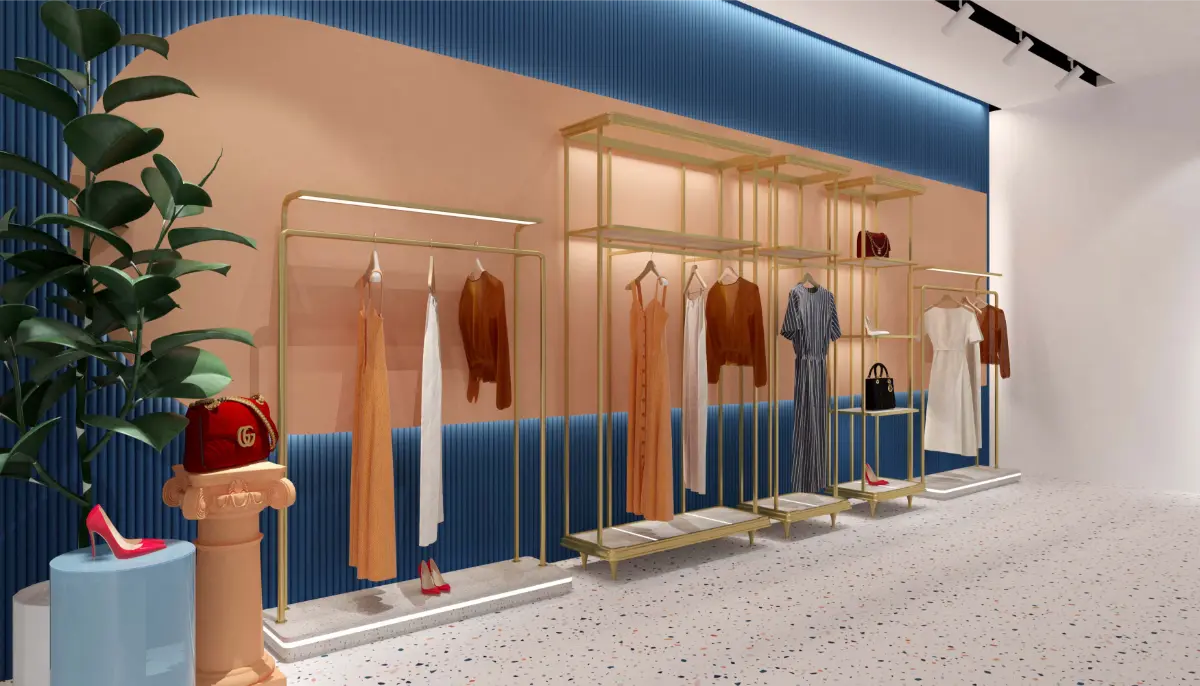
5) Load Capacity & Structural Safety (The Non-Negotiables)
Every rack has a rated load. Exceeding it risks bent rails, leaning uprights, and damaged garments. As a rule of thumb, specify a safety factor of 1.5× for daily operations and ensure cross-bracing for long spans. For heavy categories—winter outerwear, suits, denim—use heavier-gauge steel and reinforced joints.
- Bar gauge & span: Thicker bars over longer spans carry more load without noticeable deflection.
- Joint engineering: Look for welded or properly fastened hubs on four-ways and rounders.
- Floor interface: Levelers or felt feet protect the floor and stabilize on minor irregularities.
- Maintenance: Quarterly torque checks, caster inspections, and chip repair prolong life.
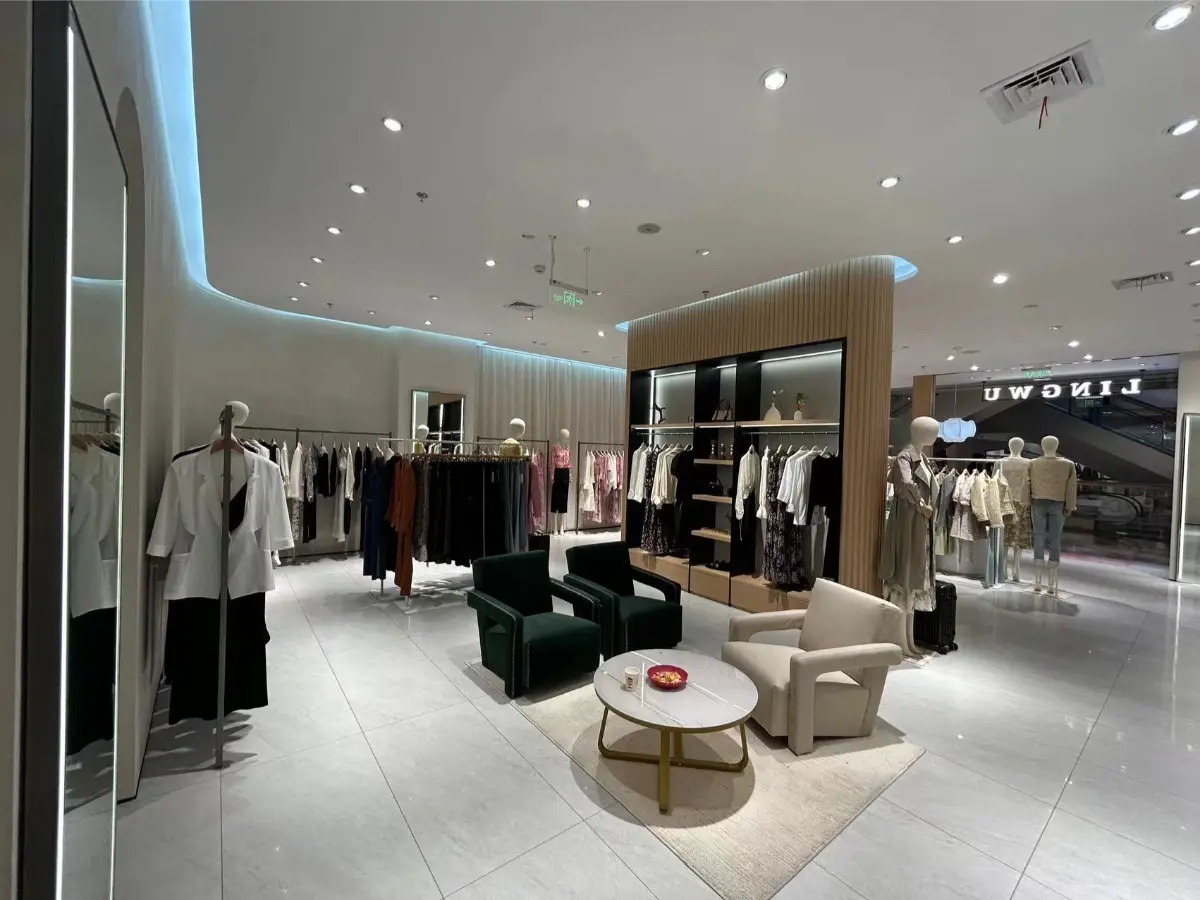
6) Store Layouts: Turning Foot Traffic into Sales
Layouts translate strategy into movement. Choose one that fits your footprint, inventory density, and brand expression:
- Loop / Raceway: Leads shoppers through a defined path, ideal for storytelling across capsules.
- Grid: Efficient for volume and quick comparison—common in denim and essentials.
- Free-Flow: Boutique-like discovery, encourages lingering and Instagrammable vignettes.
| Layout | Best For | Fixture Tips | Common Pitfall |
|---|---|---|---|
| Loop | Seasonal storytelling | Use four-ways as chapter markers | Overcrowding near entrance |
| Grid | High SKU density | Keep consistent aisle widths (≥ 1.2 m) | Monotony—break with feature tables |
| Free-Flow | Premium capsules, boutiques | Use negative space as a luxury signal | Inconsistent heights causing visual noise |
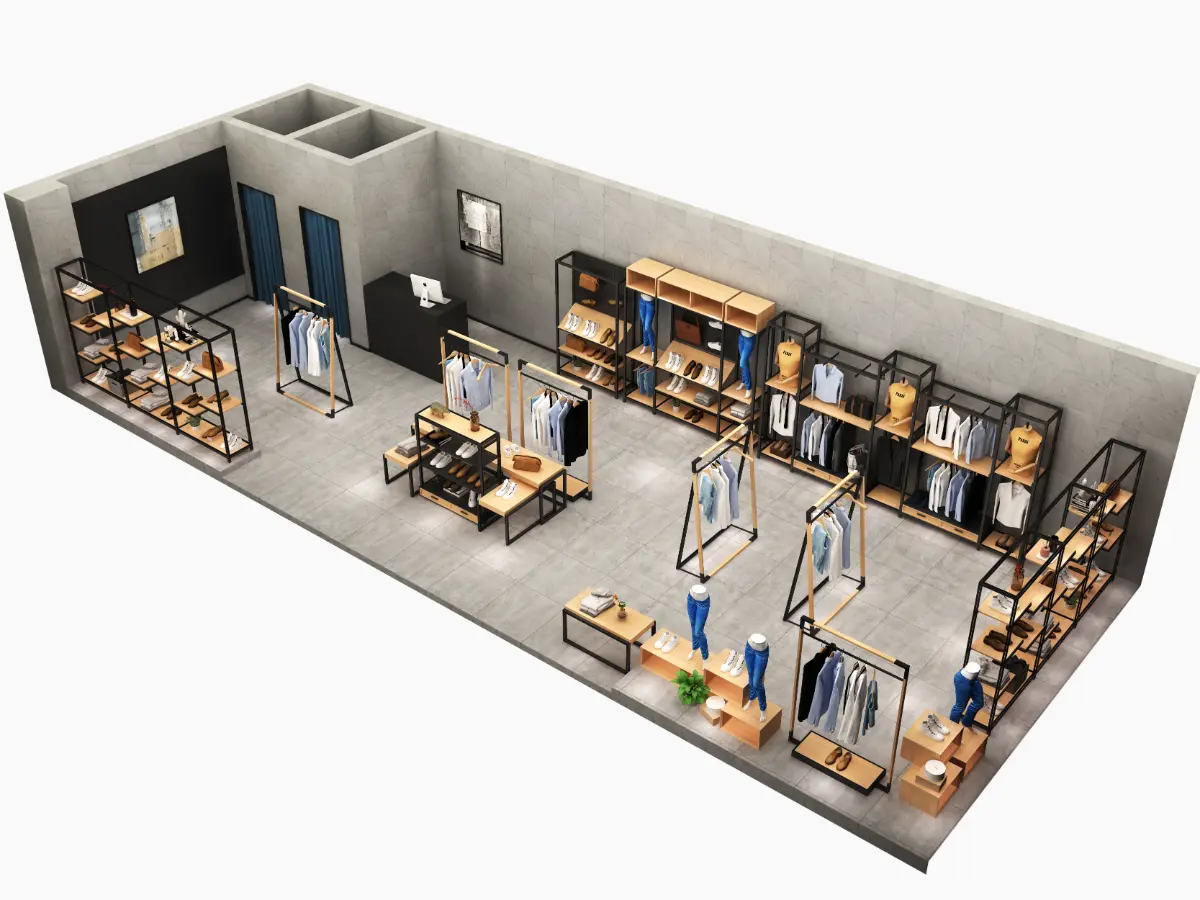
7) Visual Merchandising: Build Desire, Not Just Displays
- Color flow: Arrange from light to dark or by hue to create a calm rhythm.
- Outfit clustering: Cross-merchandise tops, bottoms, and accessories in mini-stories.
- Face-outs vs. side-hangs: Use face-outs for newness; side-hangs for depth.
- Signage: Keep it crisp—material, price, and style notes where helpful.
- Lighting: Spotlight focal racks; keep aisles evenly lit to avoid harsh contrast.
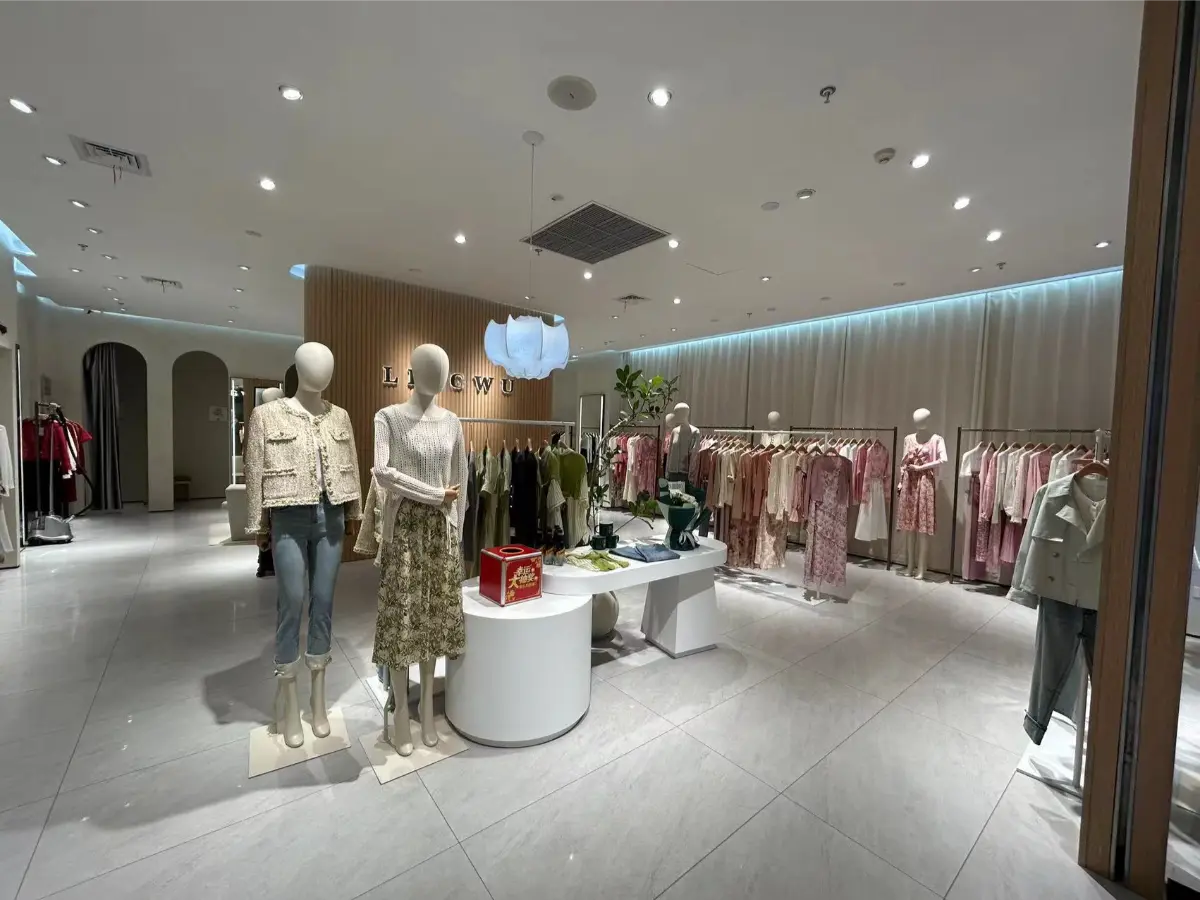
8) Sustainability & Lifecycle Thinking
Durable racks reduce replacement cycles and waste. Modular systems extend lifespan as assortments evolve. Specify recyclable materials and low-VOC finishes, and plan for back-of-house reuse when remodeling. Sustainability isn’t just ethical—it’s cost-smart.
9) Technology & Data: Smarter Fixtures, Better Results
RFID-integrated clothing store fixtures can reduce shrink and enable real-time replenishment. Simple sensors measure touch frequency on feature arms, revealing which stories attract attention. Pair heatmaps with weekly planogram updates to optimize your retail store clothing display continually.
Resource: For macro retail insights, visit the National Retail Federation.
10) Case Study: European Flair Women’s Fashion (Front-of-House Refresh)
Objective: elevate perceived value, increase dwell time, and raise units per transaction. The legacy floor used mixed heights and ad-hoc racks, creating visual clutter. We introduced a unified family of powder-coated steel frames, brass accents, and wood shelving. Four-ways marked key stories at entry and mid-floor; wall systems handled depth with tidy folds and rails.
- Results (12 weeks): +18% conversion, +22% full-price sell-through on featured capsules, -14% return rate on wrinkling-prone fabrics.
- Key changes: height harmonization, denser back walls, generous negative space in front-of-house, stronger face-out ratio for newness.
- Load compliance: reinforced arms on outerwear bays; weekly torque checks added to SOP.
11) Sizing & Ergonomics: Make Browsing Effortless
Shoppers should read the rack at a glance. Keep top rail heights between ~135–150 cm for general apparel, with reachable hooks for accessories. Ensure aisle widths ≥ 1.2 m for comfort and accessibility, and maintain consistent hanger orientation to reduce visual friction.
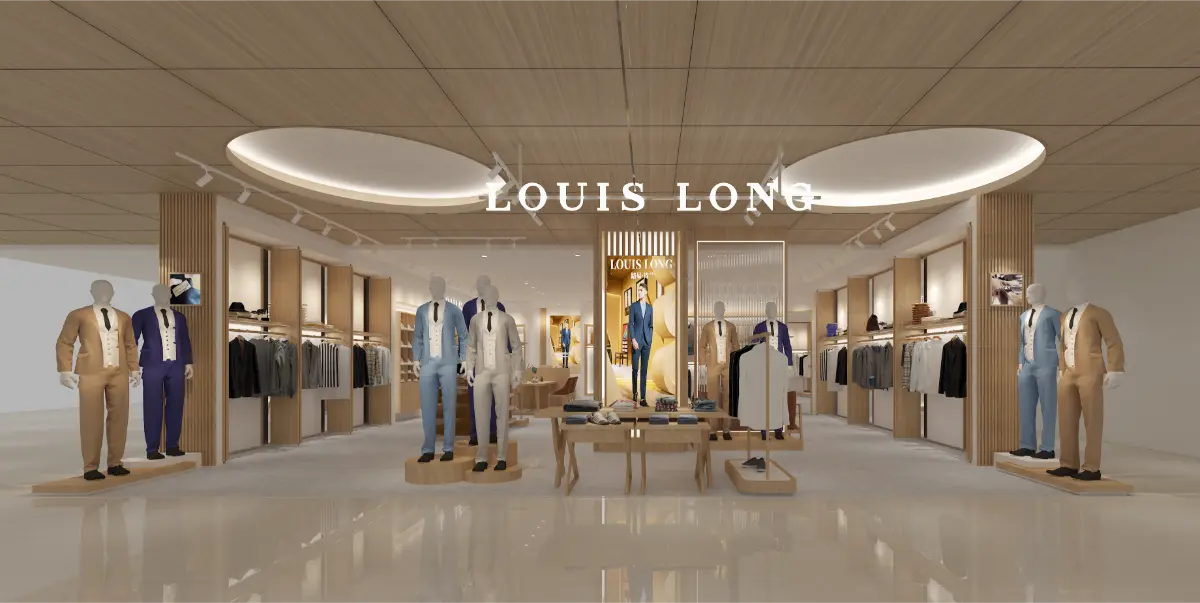
12) Cost & ROI: Where the Money Really Goes
Budget allocation should mirror your revenue plan. Prioritize the fixtures shoppers meet first (entry zone, power walls, and first table). Invest in frames and arms that won’t sag under seasonal loads. Cheap today can become expensive tomorrow when replacements and disruptions add up.
| Fixture Type | Typical Role | Investment Priority | ROI Driver |
|---|---|---|---|
| Four-Way & Feature Rails | Newness, hero looks | High | Lift AOV via outfit building |
| Wall Systems | Depth, size run management | High | Reduce time-to-find, fewer returns |
| Rounders | Volume, clearance | Medium | Inventory velocity |
| Rolling Racks | Ops, events | Medium | Labor efficiency, agility |
13) Implementation Playbook: From Spec to Launch in 6 Steps
- Define the story: Customer personas, product pyramid, brand mood.
- Draft the planogram: Choose a layout; place feature racks and power walls first.
- Select the system: Pick a unified family of clothing store fixtures (finish, heights, arm types).
- Engineer for load: Confirm bar gauge, spans, and reinforcements; add a 1.5× safety factor.
- Pilot & iterate: Mock one bay; test density, touchpoints, and sightlines.
- Roll out & maintain: Create SOPs for weekly checks and quarterly torque audits.
14) Common Mistakes to Avoid
- Visual noise: Mixed heights and finishes that break harmony.
- Overstuffing: Too many units per arm, causing creasing and low browse-ability.
- Underlighting: Feature racks without accent beams lose stopping power.
- Ignoring load: Bent rails from heavy outerwear—spec the frame for winter peaks.
- No negative space: Especially in premium environments, air is a luxury signal.
15) Buyer’s Checklist (Clip & Use In Your Next Spec)
- We use a single family of finishes with consistent heights.
- Feature racks positioned at entry, mid-floor, and back focal.
- Wall systems handle depth; four-ways handle newness.
- All rails and arms meet or exceed target load with 1.5× safety.
- Face-out ratio supports “see it, want it” merchandising.
- Sensors or manual counts track engagement on feature arms.
- Weekly maintenance checklist in place (casters, joints, touch-ups).
16) FAQ: Practical Answers for Real-World Stores
What’s the best rack for small boutiques?
Choose four-ways for hero looks plus a modular wall system for depth. Keep heights consistent and leave breathing room for a premium feel.
How do I determine safe load capacity?
Request rated loads from the manufacturer and apply a 1.5× safety margin. Reinforce long spans and heavy categories like coats and denim.
Can I mix finishes?
Yes, but keep a core palette—e.g., matte black frames with brass accents and warm wood. Too many finishes create noise.
How often should I replace fixtures?
Quality racks last years. Replace components when joints loosen repeatedly, rails bend, or finishes chip beyond repair.
Are modular systems worth it?
For brands with seasonal variety, yes. You’ll reconfigure quickly without buying entirely new racks, improving lifetime ROI.
How can I measure fixture ROI?
Track conversion, units per transaction, and touch counts on feature arms before and after fixture changes. Correlate with traffic and promotions.
17) Putting It All Together: A Simple Starter Plan
If you’re launching or refreshing, start with a unified set of racks in a finish that matches your brand’s personality. Use four-ways at the entrance to set the tone, a strong wall system for depth, and a measured number of rounders for volume. Light the features, maintain the hardware, and keep the story changing every 2–4 weeks.

18) Specific Guidance Using the Focus Keyword
When searching for clothing racks for retail stores, shortlist suppliers who can provide engineering drawings and load ratings, plus finish samples and replacement parts. Ensure their product family covers four-ways, walls, and accessories for full-store cohesion. Finally, test one bay, validate touchpoints, then scale.
For premium boutiques, a curated mix of face-outs and waterfall arms can transform your display racks for clothing store storytelling. For high-velocity zones, incorporate replenishment-friendly rails and clear signage to maintain a crisp retail store clothing display under peak traffic.
19) Image Gallery (Inline Examples)







Contact & One-Stop Support
如果你准备开一家新的店,欢迎联系我,我将为你提供一站式服务
Ammy — Customer Manager, Jiaxing Ruichen Exhibition Co., Ltd.
Web: http://www.morshopfitting.com/
Whatsapp: +86 15258090639
Linkedin: MIMI (Ammy)

